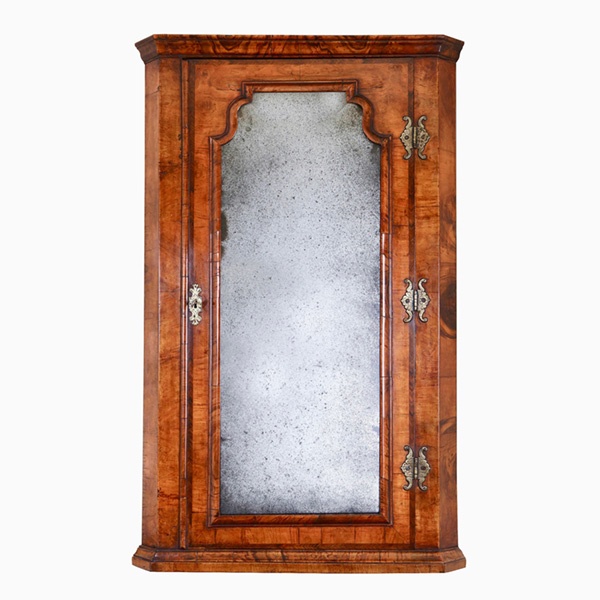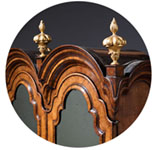A Rare Figured Walnut Queen Anne – George I Lace Box, circa 1700-1720.
Sold
Request Information
Follow Us
A Rare Figured Walnut Queen Anne – George I Lace Box, circa 1700-1720.
A rare figured walnut Queen Anne – George I period lace box, circa 1700-1720.
The cross-grain banded ovolo moulded top is veneered in figured walnut consisting of an oval to the centre and a quadrant to each corner inlaid in holly.
The frieze is cross-grain moulded and veneered in figured walnut to the sides and the face which is inlaid with holy in a framed break-arch fashion and fitted with a gilt brass escutcheon and the original lock.
The curiously named ‘lace box’ or ‘bible box’ veneered in oyster cut hardwoods such as olive, Kingwood, walnut and marquetry were popular amongst the middle and higher classes of society from circa 1660-1700. This is a rare example dating between 1700-1710.
Condition
Good. Wear consistent with age and use.
Dimensions
Height: 5.12 in. (13 cm)
Width: 15.75 in. (40 cm)
Depth: 13 in. (33 cm)
PREVIOUSLY SOLD
No Results Found
The page you requested could not be found. Try refining your search, or use the navigation above to locate the post.
No Results Found
The page you requested could not be found. Try refining your search, or use the navigation above to locate the post.
YOU MAY ALSO LIKE

Queen Anne Walnut Corner Cupboard with Bevelled Mirror Plate
A truly remarkable find in original condition. To the door a shaped soft bevelled mirror plate is framed by a cross-grain molding of typical queen Anne design which is further cross-banded, feather-banded and edged to the opening with a single de-molding.

Queen Anne Walnut Corner Cupboard with Bevelled Mirror Plate
A truly remarkable find in original condition. To the door a shaped soft bevelled mirror plate is framed by a cross-grain molding of typical queen Anne design which is further cross-banded, feather-banded and edged to the opening with a single de-molding.









